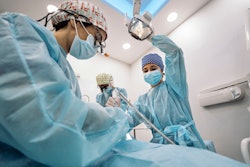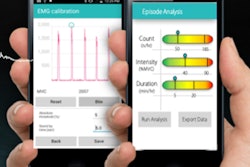
Do you have patients with dentofacial deformities who also have a pre-existing temporomandibular disorder (TMD)? If you are concerned about finding the best way to help these patients with both their pain and their jaw function, the researchers of a new study suggest corrective, or orthognathic, surgery may be the ticket.
 Varun Arya, DMD.
Varun Arya, DMD.Almost 60% of TMD patients in the study had complete resolution of their TMD symptoms after surgery, and a majority of the remaining patients reported reduced pain and improved jaw function after surgery, according to lead author Varun Arya, DMD, who presented the study findings at the recent 2017 American Association of Oral and Maxillofacial Surgeons meeting in San Francisco.
"It is important for general dentists to accurately diagnose patients with TMD and then to appropriately refer," Dr. Arya told DrBicuspid.com after his presentation.
Orthognathic surgery
Corrective jaw, or orthognathic, surgery is performed to correct a range of skeletal and dental irregularities, including the misalignment of jaws and teeth. This surgery can improve a patient's ability to chew, speak, and breathe.
However, Dr. Arya noted that this topic is considered controversial.
"The research is split on if orthognathic surgery has a beneficial effect," he said during his presentation.
This prospective observational study included patients between the ages of 16 and 40 years. All patients with dentofacial deformities underwent orthognathic surgery by a single surgeon. The researchers excluded those with a known history of temporomandibular joint (TMJ) pathology, an autoimmune disorder affecting the TMJ, previous TMJ trauma, and previous TMJ surgery.
They divided the patients into two groups based on clinical examination and MRI findings, as well as those with and those without pre-existing TMD, then further divided the TMD group into three subcategories:
“It is important for general dentists to accurately diagnose patients with TMD and then to appropriately refer.”
- Pain-related TMD and headaches
- Intra-articular joint disorders
- Degenerative joint disorders
The study included 65 patients: 35 with TMD and 30 without TMD. Of the TMD group, 22 (63%) of the patients had complete resolution of their TMD symptoms and were reclassified postoperatively as non-TMD, Dr. Arya reported.
The other 13 (37%) patients remained in the TMD group after surgery, but most of these patients had improvement in their pain on the Graded Chronic Pain Scale, and almost 80% of those patients had improvement in their jaw function on the Jaw Function Limitation Scale.
In the other group of 30 patients who did not have TMD, 24 (80%) remained classified as non-TMD, but six had new-onset TMD symptoms. Four of the six patients were reclassified into the group of intra-articular joint disorder (disk displacement), and two were reclassified in the group of degenerative joint disorders.
The majority of patients with dentofacial deformities and TMD who undergo orthognathic surgery have an improvement in pain-related symptoms and jaw function after surgery, the researchers concluded, but they cautioned that TMJ examinations should be performed both before and after surgery.
"Patients undergoing orthognathic surgery should have a thorough temporomandibular joint exam before and after surgery," Dr. Arya and colleagues concluded.



















